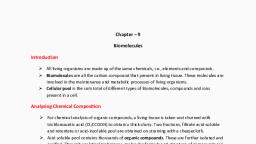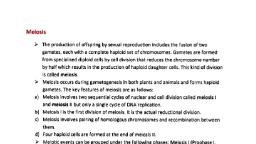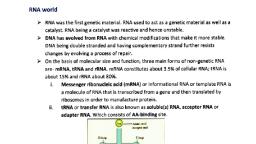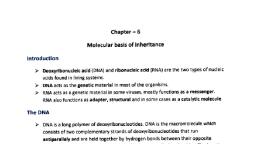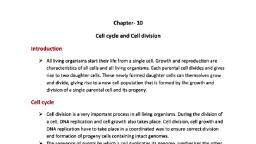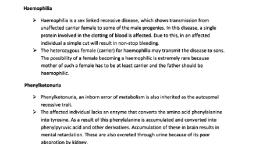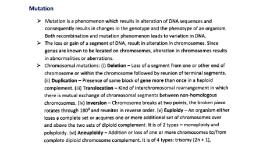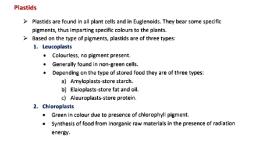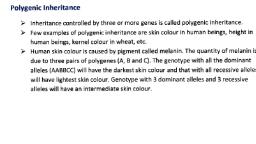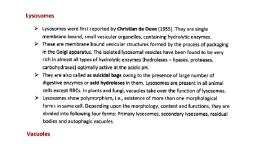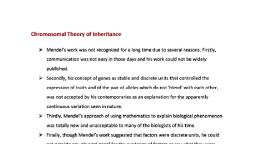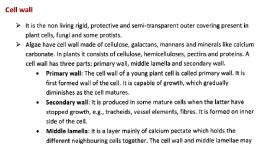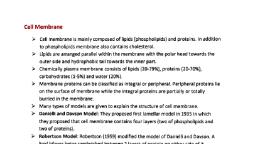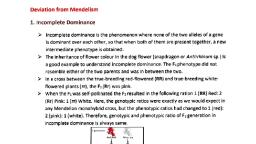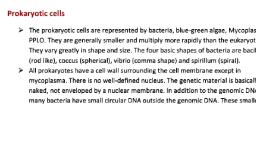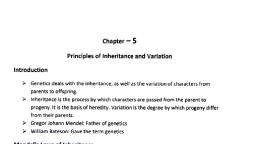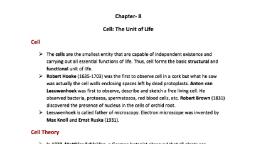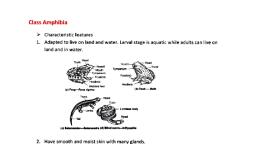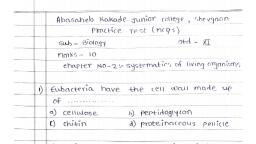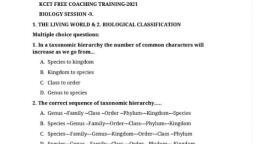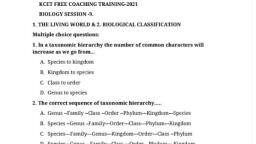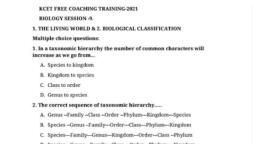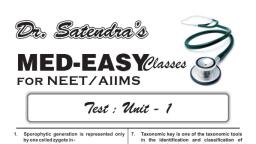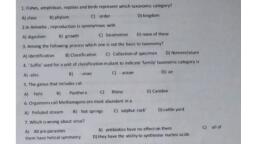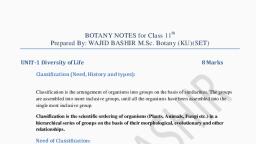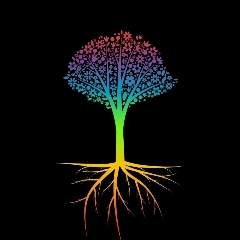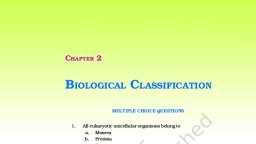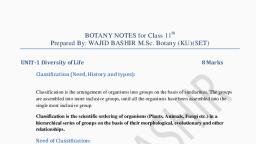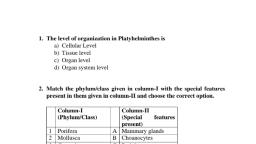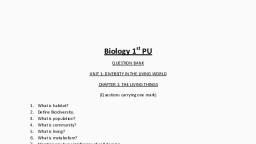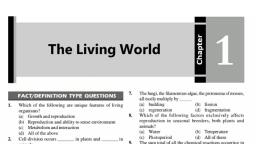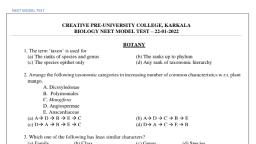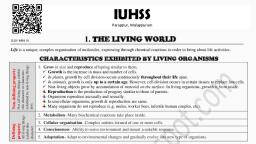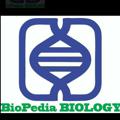Page 1 :
BRILLIANCE SCHOOL, MALOM, TULIHAL, 1°" TERM EXAMINATION, 2021, , BIOLOGY CLASS 11 FM: 25, 1, The ascending or descending arrangement of taxonomic categories is called as, A. Classification, B, Taxonomy, C. Hierarchy, D. Key, , 2. Botanical gardens have, A. Living plants and animals for reference, B. Preserved plant specimens, C. Collection of living plants, D. Living and preserved plants, 3. Siliceous frustules of diatoms being indestructible piled up at the bottom of ocean and, formed a thick bed over billions of years. Such a thick bed is known as, A. Red sea, B, Diatomaceous earth, C. Pseudorocks, D. Red tide, 4. In which of the following classes of fungi, sexual reproduction is absent’?, A. Basidiomycetes, B. Deuteromycetes, C. Phycomycetes, D. Ascomycetes, 5. The protein coat of viruses that enclose the genetic material is called, A. Virion, B. Capsid, C. Peplomers, D. Capsomers, 6. As we go from species to kingdom in a taxonomic hierarchy, the number of common, characteristics, A. Remain same, B. Will increase, C. Will decrease, D. May increase or decrease, 7. ICBN stands for, A. international committee for biological naming, B. international code for botanical nomenclature, C. international code for biological nomenclature, D. international code for biological naming, 8. Chrysophytes, Euglenoids, Dinoflagellates and Slime moulds are included in the kingdom, A. Monera, B. Protista, C. Fungi
Page 2 :
D. Animalia, 9. Name the archaebacteria present in the guts of ruminant animals, A. Methanogens, , D. Paramoecium, 10. Phylogenetic classification is based on, A. utilitarian system, B. habits, C. overall similarities, , D. common evolutionary descent, 11. In blue green algae the structure specialized for nitrogen fixation is, , A) heterocyst, B) aplanospore, C) thylakoid, D) endospore, 12. Red oceanic tides can be due to, A) diatoms, B) red algae, C) dinophyceae, D) blue green algae, 13, The important antibiotic wonder drug extracted from Penicillium is, A) penicillin, B) tetramyein, C) aureomycin, D) streptomycin, 14, Choose the correct sequence of taxonomic categories, A) Class-Phylum-Order-Family-Genus-Species, B) Division-Class-Order-Family-Genus-Species, C) Division-Class- Family -Order- -Genus-Species, D) Phylum-Order-Class-Family-Genus-Species, 15. A virus differs from a bacterium as it contains, A) cell wall, B) cytosol, C) DNA as genetic material, D) DNA or RNA as genetic material with no ribosome, 16, Which of the following is a defining characteristic of living organisms?
Page 3 :
A) Growth, B) Ability to make sound, C) Reproduction, D) Response to external stimuli, 17. Systema Naturae is written by:, A. Linnaeus, B. Aristotle, C. Hippocrates, D. Darwin, 18. With respect to fungal sexual cycle, choose the correct sequence of events:, , (A) Karyogamy, Plasmogamy and Meiosis, (B) Meiosis, Plasmogamy and Karyogamy, (C) Plasmogamy, Karyogamy and Meiosis, (D) Meiosis, Karyogamy and Plasmogamy, 19. Viruses are non-cellular organisms but replicate themselves once they infect the host cell., To which of the following kingdom do viruses belong to?, , (A) Monera, , (B) Protista, , (C) Fungi, , (D) None of the above, 20, The smallest living cells known are:, , (A) Eubacteria, , (B) Mycoplasma, (C) Slime moulds, (D) Archaebacteria, 21, Bacteria whose cell has only a curve/comma is, (A) Vibrio, (B) Cocei, (C) Spirilli, (D) Bacilli, 22. Taxonomy is the study of, A) evolution, B) the classification of life forms by their similarities and differences, C) genetics, D) the history of the field of biology, 23. ‘Key’ is a taxonomical aid used for the identification of organisms, Each statement in key, is called a, A. Couplet, B. Lead, C. Both (a) and (b)
Page 4 :
D. None of these, , 24, Which is not correct, , A. Herbarium houses dried, pressed and preserved plant specimens, B, Botanical gardens have collection of living plants for reference, C. Museum has collection of photographs of plants and animals, D. Key is taxonomic aid for identification of specimens, , 25, Homeostasis is, A) a tendency to change with change in environment, B) tendency to resist internal changes, C) disturbance in regulatory controls, D) plant and animal extracts used in homeopathy

